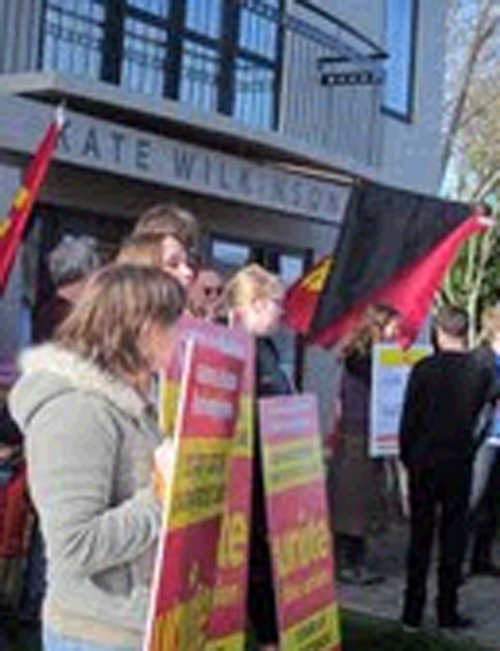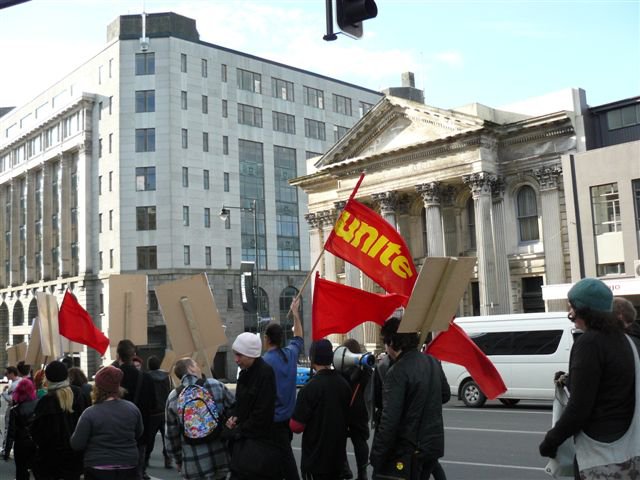By Byron Clark, Jared Phillips, and Chris Matahaere
On June 25 Unite and other progressive organisations, as well as socialists, sent a message to the government that any attempt to reintroduce youth rates will be met with resistance. These protests were very much the beginning and will be intensified – up to and including strikes and high school demonstrations – if the government does pursue a reintroduction. The Auckland and Wellington demonstrations went ahead successfully, with the Auckland demonstration being focussed on the head offices of the Employers and Manufacturers Association, whose CEO had in a radio interview justified the gendered wage gap by claiming that women are less productive because of ‘monthly sick problems’. The Auckland protest drew the connection between unequal pay for women and the potential for discriminatory rates to be applied to young workers. Below is a summary of activities in other major cities.

Christchurch
A short-notice a picket was held outside Minister of Labour Kate Wilkinson’s office in Rangiora. Car pools left Christchurch loaded with activists who brought the North Canterbury town the first protest it had seen in some time. Fifteen people gathered and chanted “no youth rates” and “working for nothing really sucks, what do we want? $15 bucks”. Open mic speeches were made by Matt Jones (Unite organiser), Jared Davidson (Beyond Resistance) and Byron Clark (Workers Party) highlighting the need for ongoing action against youth rates and other anti-worker laws. An impromptu march down the main street took place, and even in this predominantly conservative and mainly National-voting town the picket got a lot of support, especially from young people.
Hamilton
National MP David Bennett is the chair of the Transport and Industrial Relations Select Committee. Around 30 people from Unite, Greens on Campus, Young Workers Resource Centre, WP, NZNO, and Out at Work protested outside his Hamilton East electorate office. Present were Unite delegates from McDonalds and Starbucks, as well as RMTU and EPMU delegates. The protest outside his office went for 40 minutes before protestors decided by a vote to march over the Bridge Street bridge to a nearby convention centre at which the Young Nats were having their annual national policy-setting meeting. The protestors chanted and disrupted the event from an outside balcony with nothing between the protest and the conference other than ranch-slider doors. Protest chants were focussed on equal pay for women and youth, and much of the megaphone talking was focussed on the point that no section of working people should pay for the crisis.

Dunedin

Activists and others in Dunedin concerned about the possible reintroduction of youth rates staged a demonstration. It was a good turn out for an event with such short notice, with around 50-100 being present at different times. The protestors marched from the Octagon down to a National Party office in Princes street. It was the best turn out in the country. The Unite membership know youth rates would impact on them. Chris Matahaere, Unite’s organiser in the area said there is no such thing as youth rent or youth power, so why should there be youth rates, and emphasised that youth rates create a higher level of exploitation. Other groups represented at the demonstration included the ISO and The Green Party.
